Discover 35 hidden attractions, cool sights, and unusual things to do in Porto Alegre (Brazil). Don't miss out on these must-see attractions: Fundação Iberê Camargo, Porto Alegre Public Market, and MARGS. Also, be sure to include Parque Farroupilha in your itinerary.
Below, you can find the list of the most amazing places you should visit in Porto Alegre (Rio Grande do Sul).
Table of Contents
Fundação Iberê Camargo
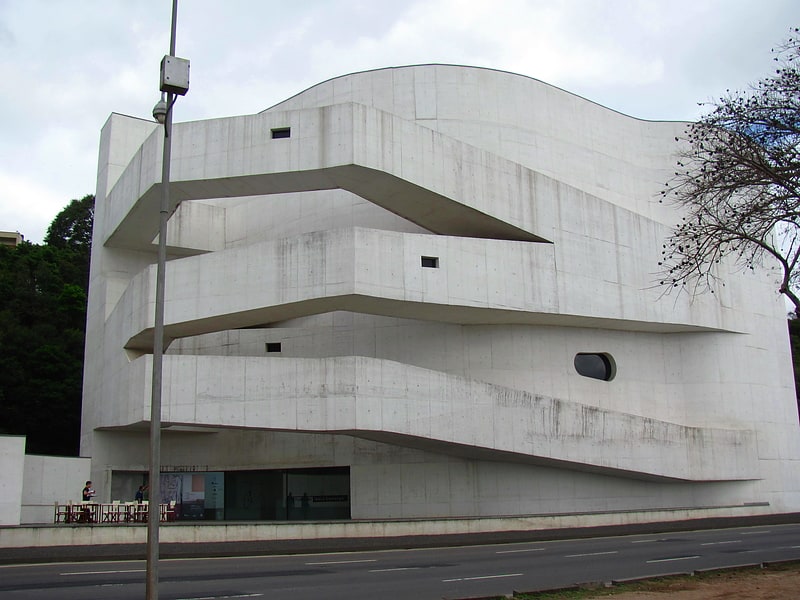
Sleek museum devoted to Iberê Camargo. The Iberê Camargo Foundation is a cultural institution and museum located in Porto Alegre, Brazil. The Foundation is dedicated to preserving and promoting the work of Brazilian painter Iberê Camargo.[1]
Address: Av. Padre Cacique, 2000, 90810-240 Porto Alegre (Centro)
Porto Alegre Public Market
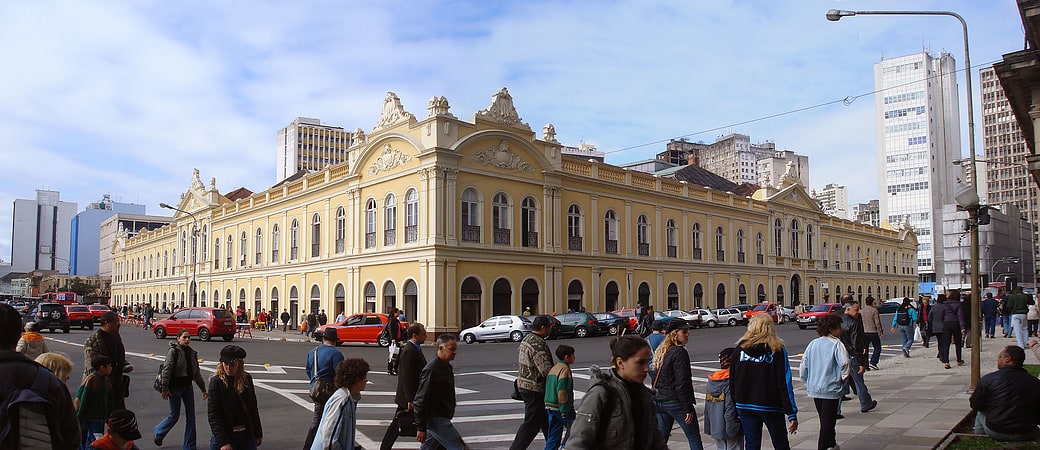
Also known as: Mercado Público de Porto Alegre
Market in Porto Alegre, Brazil. The Porto Alegre Public Market, in downtown Porto Alegre, Brazil, is the city's oldest public market. It also is an important historic landmark and a well-known meeting point, with many coffee shops and restaurants.
The cornerstone was laid on 29 August 1864, and it was constructed over an earlier and smaller market. Frederico Heydtmann designed the building, but his plan was substantially altered and enlarged. The inauguration took place on 3 October 1869. In 1886, 24 small shops were installed in the inner yard.
In 1912, while undergoing renovation, a fire destroyed all the stalls in the inner area. A second floor was added by 1913. The market suffered from a major flood in 1941, and from additional fires in 1976, 1979 and 2013. In the administration of Telmo Thompson Flores, it ran the risk of being demolished, but the outcry led to the reconsideration of the decision.
In 1990 the City administration organized a multidisciplinary team to develop a Restoration Project, which focused on the following goals:
- Rescue of the aesthetic quality of the building;
- Optimizing supply potentials;
- Creation of spaces of sociability.
The works included a modern structure of steel and glass to cover the large area of the inner yard, regained the visual perception of the inner arcades, renewed the internal circulations, created new living spaces, and deployed network infrastructure needed to handle the daily activities of a large and busy market.
The new cover allowed the integration between the ground floor and second floor. The second floor, where there were offices and public offices before, now has several popular establishments such as restaurants, snack bars, and coffee shops. With the works, the market also expanded its number of shops. The inauguration took place on 19 March 1997.
The Public Market is part of the traditions of the city, mainly for its "Banca 40" (an ice cream parlor), its centenary restaurant Gambrinus and one of the most traditional bars in town, the 101 years old Bar Naval (Navy Bar). There are about 109 shops, selling fresh produce and baked goods, locally raised meats and dairy products, and various other food items and also handcrafted goods. There are over 100,000 items for sale.
On 6 July 2013, the Public Market caught fire again. The fire is believed to have started at 20h30 on the upper floor at the corner of Avenida Borges de Medeiros and Júlio de Castilhos. Recent reports say that no people were injured, but 30% of the structure appeared to have burned down.[2]
Address: Mercado Público de Porto Alegre, 90020-070 Porto Alegre (Centro)
MARGS
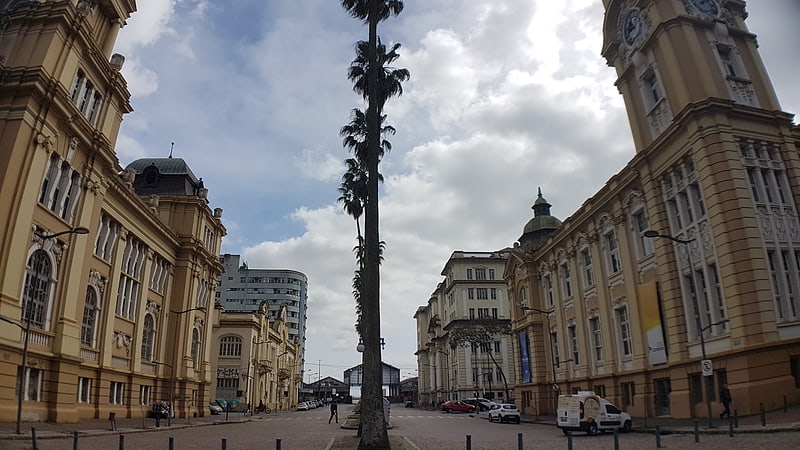
Also known as: Museu de Arte do Rio Grande do Sul Ado Malagoli
Museum in Porto Alegre, Brazil. The Rio Grande do Sul Museum of Art is an art museum in the State of Rio Grande do Sul. It is located in the centre of Porto Alegre. Its eclectic building, national heritage, is one of the most noteworthy historic buildings in Porto Alegre. Its design is usually attributed to Theodor Wiederspahn, a German-Brazilian architect, although important local historian and artist Fernando Corona ascribes it to Germano Gundlach.[3]
Address: Praça da Alfândega, 90010-210 Porto Alegre (Centro)
Parque Farroupilha
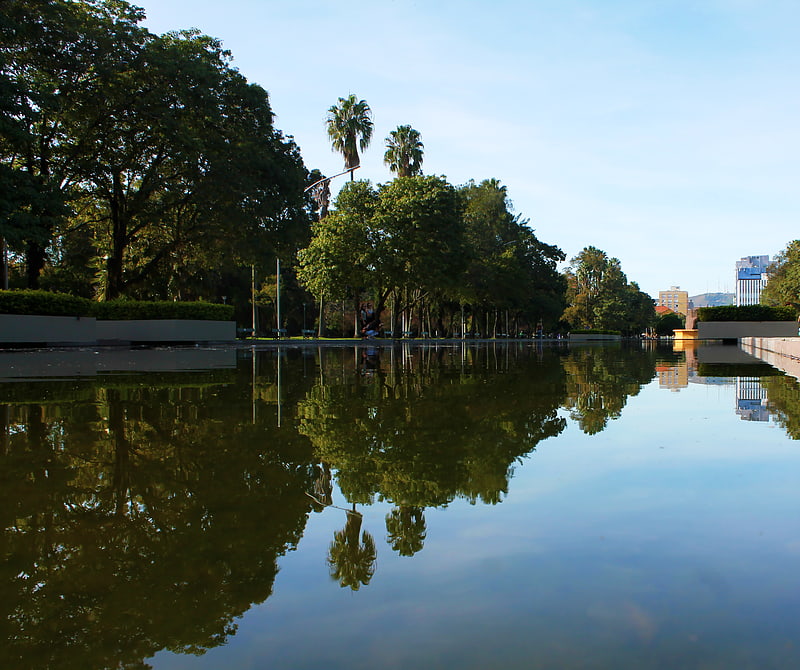
Urban park with recreational activities. Farroupilha Park, also known as Parque da Redenção, is a major urban park in the city of Porto Alegre, the state capital of Rio Grande do Sul, in Brazil.
The park was designed by French architect Alfred Agache and founded on September 19, 1935.
Near to the Centro Histórico (Historic Centre), Farroupilha Park is located within a polygon formed by José Bonifácio, João Pessoa, Luiz Englert, Setembrina and Osvaldo Aranha Avenues.[4]
Address: Avenida José Bonifácio, Porto Alegre (Centro)
Museu de Ciências Naturais
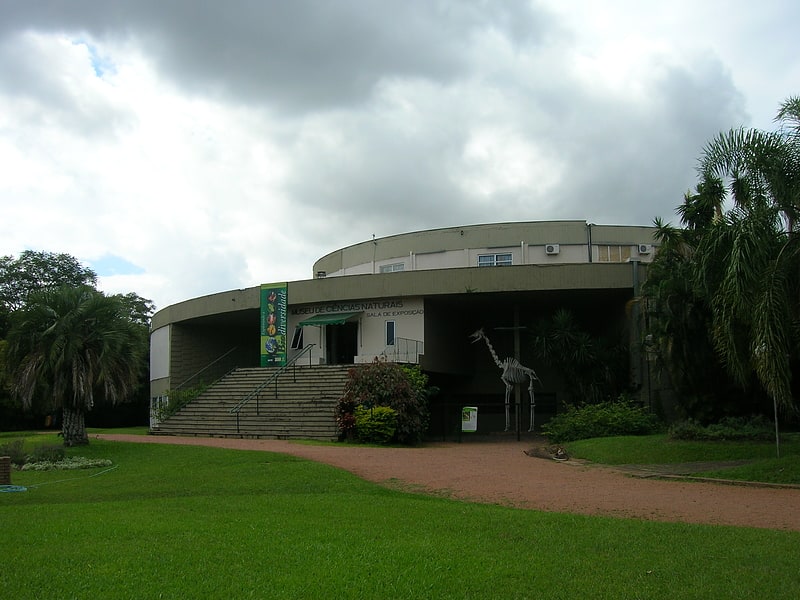
Museum in Porto Alegre, Brazil. The Museu de Ciências Naturais da Fundação Zoobotânica do Rio Grande do Sul, is a Brazilian museum located inside the Porto Alegre Botanical Garden. Open from Monday to Sunday 9am to 12pm and from 13h30 to 17h.
Emerged in 1954 from the breakup of a natural history collection of the Júlio de Castilhos Museum.
The permanent exhibition features 49 windows, that approach the richness of species native to Rio Grande do Sul, both flora and fauna. The show is organized in an evolutionary sequence: plant today, groups of animals and paleontological showcases. In this way, show the characteristic fauna of various ecosystems of the state: swamp, field and forest.[5]
Address: R. Dr. Salvador França, 1427, 90690-000 Porto Alegre (Centro)
Parque Moinhos de Vento
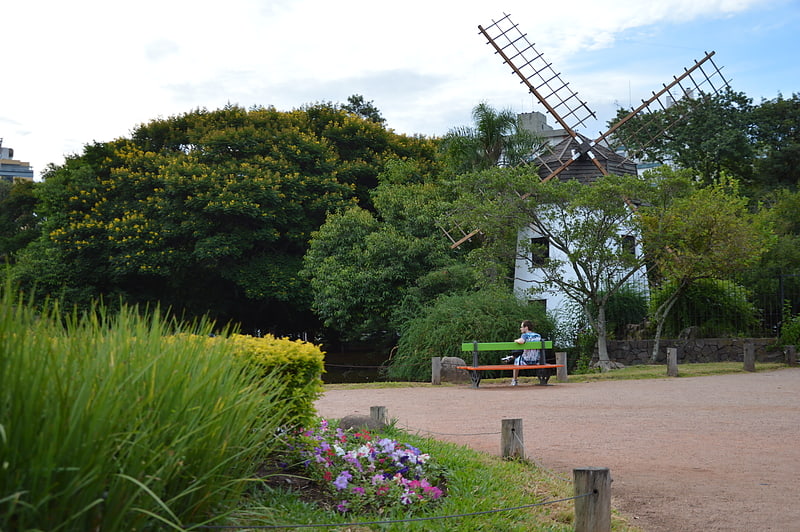
City park in Porto Alegre, Brazil. Moinhos de Vento Park, popularly known as Parcão, is a well-known park in Porto Alegre. It is located in the Moinhos de Vento neighborhood.
The park structure consists of soccer, tennis and volleyball fields, gym equipment, a playground, a kids library, a pond with fish, turtles and ducks, a playground, and a replica of an Azorean windmill. The park also features a monument commemorating Castelo Branco.[6]
Address: Av. Goethe, 90430-001 Porto Alegre (Centro)
Museu de Ciências e Tecnologia

Interactive science and tech museum. The PUCRS Museum of Science and Technology is a Brazilian museum run by the Pontifical Catholic University of Rio Grande do Sul, located in the city of Porto Alegre in Rio Grande do Sul, at Ipiranga Av. 6681, Building 40, Parthenon. Visiting hours are from Tuesdays to Sundays, from 9am to 5pm. However, due to the current pandemic, it is necessary to book it beforehand.[7]
Address: PUCRS - Av. Ipiranga, 6681, 90619-900 Porto Alegre (Partenon)
Metropolitan Cathedral of Our Lady Mother of God
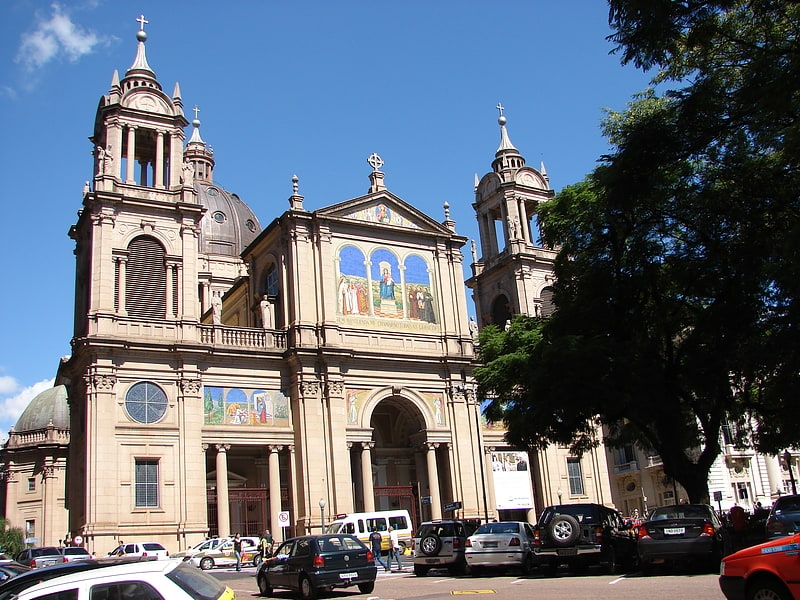
Also known as: Catedral Metropolitana de Porto Alegre
Cathedral in Porto Alegre, Brazil. The Metropolitan Cathedral of Our Lady Mother of God also called Catedral Metropolitana de Porto Alegre is a cathedral of the Catholic Church which is located in the city center, in the Praça da Matriz in Porto Alegre a town in the State of Rio Grande do Sul in Brazil.
The story of the founding of the parish of Our Lady Mother of God is closely related to the origin of the city of Porto Alegre. With the transfer of the state capital of Viamão to Porto dos Casais, it became clear the need to build a new church, with dimensions corresponding to the new status of the city. On July 12, 1772, the viceroy ordered that land for the construction demarcate.
This Baroque style cathedral was designed by an unknown architect and has two bell towers flanking the main entrance. These towers were brought from Rio de Janeiro in 1774.
The current cathedral was built in 1921-1972.[8]
Address: R. Dq. de Caxias, 1047, 90010-280 Porto Alegre (Centro)
Marinha do Brasil Park
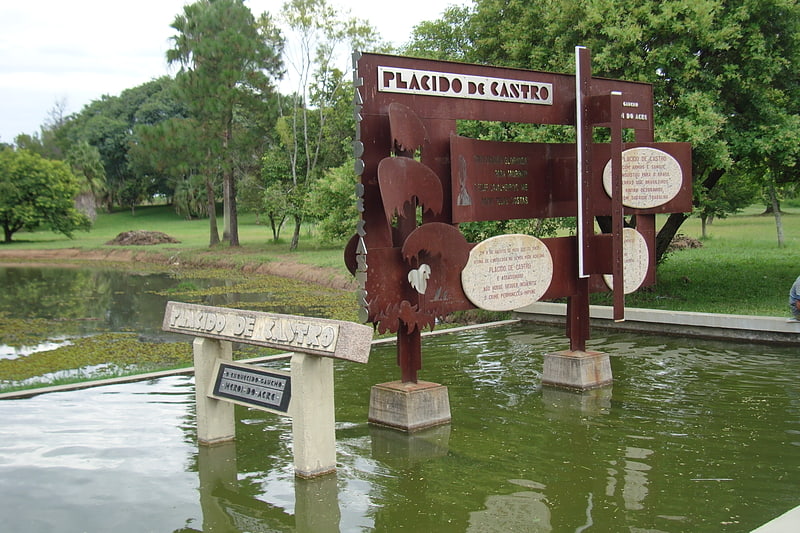
Also known as: Parque Marinha do Brasil
City park with trees and sports facilities. Marinha do Brasil Park is an urban park located in the city of Porto Alegre, the state capital of Rio Grande do Sul, Brazil. It was inaugurated on December 9, 1978, on 70,7 hectares of city-owned land. It is located in Praia de Belas neighbourhood.[9]
Address: Parque Marinha do Brasil, Porto Alegre (Centro)
Arena do Grêmio
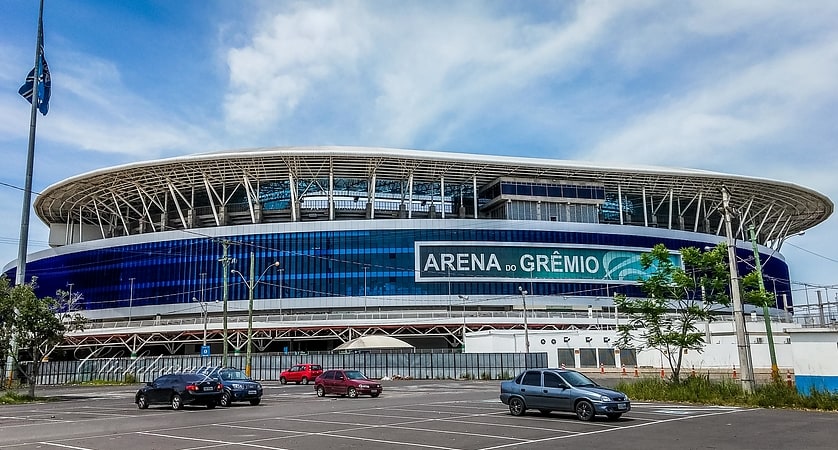
Stadium in Porto Alegre, Brazil. Arena do Grêmio is a multi-use stadium in Porto Alegre, Rio Grande do Sul. It was inaugurated on December 8, 2012.
It is used mostly for football matches and as the home stadium of Grêmio Foot-Ball Porto Alegrense, replacing the Estádio Olímpico Monumental. With a 60,540 capacity (55,662 current official capacity), the stadium is one of the most modern venues in South America.[10]
Address: Arena do Grêmio - Av Padre Leopoldo Brentano, Rampa Oeste, 110 - Loja 1230, 90250-590 Porto Alegre (Humaitá)
Porto Alegre Botanical Garden
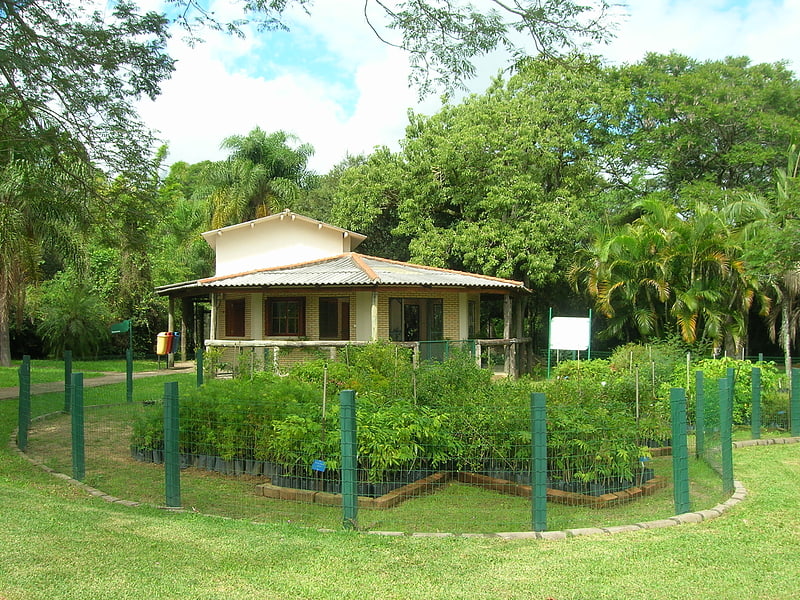
Also known as: Jardim Botânico de Porto Alegre
Botanical garden in Porto Alegre, Brazil. The Porto Alegre Botanical Garden is a Foundation of Rio Grande do Sul located on the street Salvador França, in Porto Alegre, Brazil.[11]
Address: R. Dr. Salvador França, 1427, 90690-000 Porto Alegre (Centro)
Museu Júlio de Castilhos
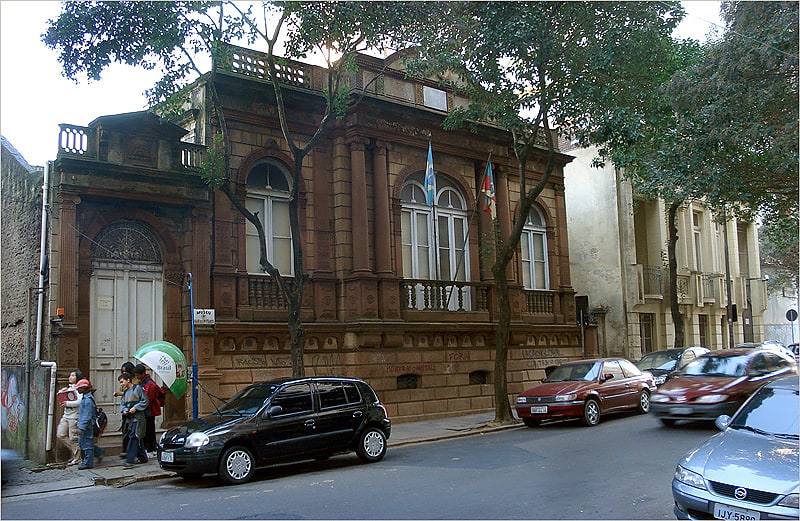
Museum in Porto Alegre, Brazil. Júlio de Castilhos Museum is a museum located in the city of Porto Alegre. It is the oldest museum in Rio Grande do Sul state.
Its collection, over 10 thousand pieces, is Brazilian national heritage, and comprises objects of historical, artistic, ethnographic and archaeological character, mostly related to the history of Rio Grande do Sul. Its sections for the Ragamuffin War and the Paraguayan War are specially rich. The museum also preserves a few but very important examples of sculptures produced within Indian Reductions by Jesuits and indigenous peoples.[12]
Address: R. Duque de Caxias, 1205, 90010-281 Porto Alegre (Centro)
Theatro São Pedro
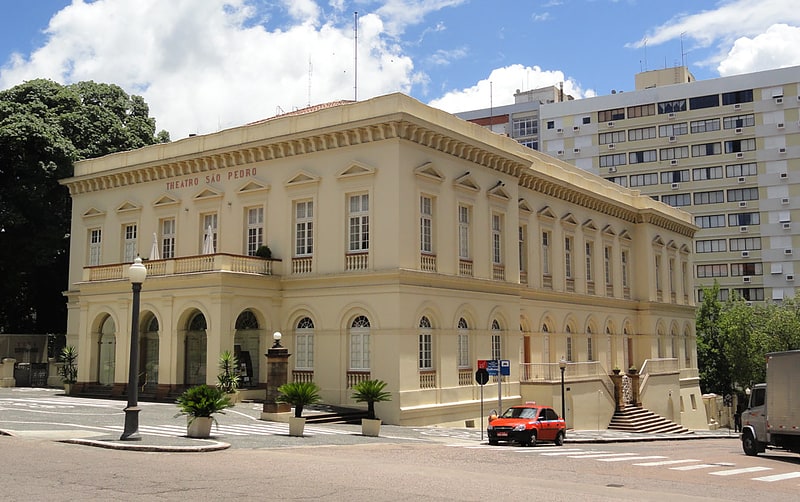
Theatre in Porto Alegre, Brazil. The São Pedro Theatre is the oldest theatre in the city of Porto Alegre, the state capital of Rio Grande do Sul, Brazil.[13]
Address: Praca Marechal Deodoro s/n, 90010-300 Porto Alegre (Centro)
Our Lady of Navigators church
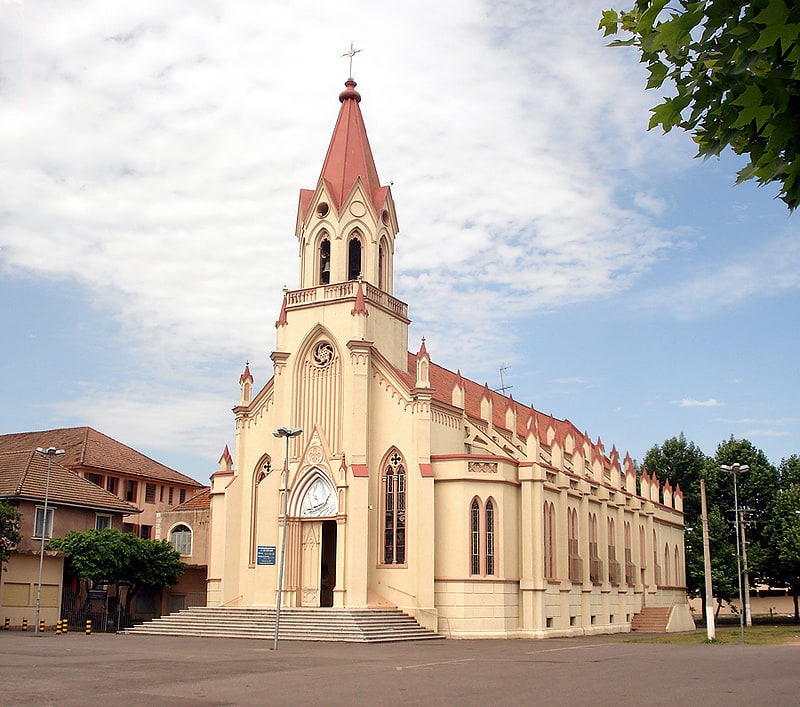
Also known as: Igreja de Nossa Senhora dos Navegantes
The Church of Our Lady of Navigators is a Roman Catholic Marian church located in the city of Porto Alegre, Brazil. It is one of the most popular Roman Catholic churches in the city and is the focus of one of the largest processions in the city each year on February 2. The current church was built in 1919 and is devoted to Our Lady of Navigators.
The devotion to Our Lady of Navigators started in Porto Alegre in 1869 by Bishop Sebastião Dias Laranjeira who commissioned the sculptor João Afonseca Lapa to build a statue of the Virgin Mary. The statue was first installed in 1871 in another church and was carried in processions.
In 1875 Margarida Teixeira de Paiva donated land for the construction of a church devoted to Our Lady of Navigators and city volunteers built the first church in wood. This first chapel was destroyed by fire, and in 1896 another was erected in the same place, but also caught fire in 1910. Community volunteers again built a new church which was completed in 1912 and formally inaugurated on 23 March 1913, with a new statue of the Blessed Virgin again made by João Afonseca Lapa similar to the one lost in the fire.
The building has been renovated and expanded over the years. It has a Gothic style, with one central tower and two aisles with a series of buttresses, pinnacles and small pillars highlighted abroad. Over the doorway is a bas-relief with the image of the Blessed Virgin Mary saving the shipwrecked.[14]
Address: Praca Navegantes 12, 90240-160 Porto Alegre (Humaitá)
Institute of Geosciences of the Universidade Federal do Rio Grande do Sul
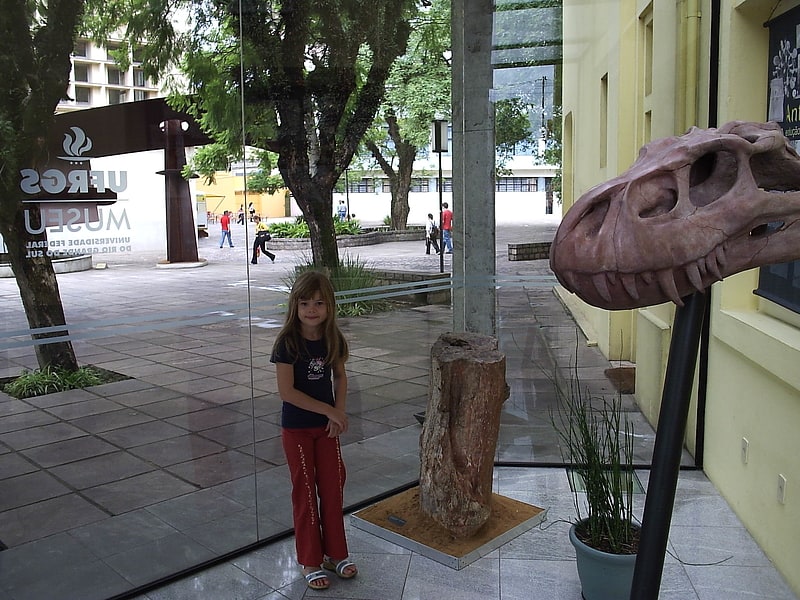
Also known as: Instituto de Geociências da Universidade Federal do Rio Grande do Sul
Museum in Brazil. The Institute of Geosciences is a unit of instruction of the Federal University of Rio Grande do Sul. It includes the undergraduate courses of Geography, Geomatics Engineering, Geology. It has a department of study of vertebrate paleontology which has made great contributions to the geopark of Paleorrota.
The unit is also responsible for the maintenance of three museums, the Journal of Research in Geosciences, and post-graduate education and research.[15]
Usina do Gasômetro
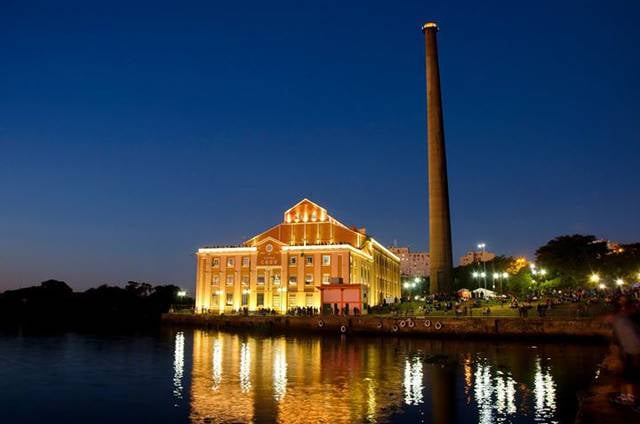
Usina do Gasômetro, or simply Gasômetro, is a former Brazilian power plant located in Porto Alegre, the capital of Rio Grande do Sul. Despite its name, it was actually a coal-fired power plant - the "Gasômetro" referred to the petroleum gas tanks that were distributed by pipeline to the city's residences that were located next to where the plant is today. With this, the tip of the city became known as "Ponta do Gasômetro" and the street around this tip as "Volta do Gasômetro". With the later installation of the thermoelectric plant, it was renamed "Ponta do Gasômetro Plant" or simply "Gasômetro Plant". It is a listed building by IPHAE.
Address: Av. Pres. João Goulart, 551, 90010-120 Porto Alegre (Centro)
Estádio dos Eucaliptos

Stadium in Porto Alegre, Brazil. The Estádio Ildo Meneghetti, familiarly known as Estádio dos Eucaliptos, was a football stadium located in the neighborhood of Menino Deus, in Porto Alegre, Rio Grande do Sul, Brazil. The stadium was built in 1931 had a maximum seating capacity of 20,000 people.
Estádio dos Eucaliptos was owned by Sport Club Internacional. The stadium was nicknamed after Chácara dos Eucaliptos (meaning Eucalyptus' Ranch), the site of the stadium. Its formal name honors Ildo Meneghetti, who was a president of Internacional and an engineer.
There are within the stadium football fields made of synthetic turf available for use.[16]
Address: R. Dona Augusta, 333, 90850-130 Porto Alegre (Centro)
Santuário Mãe de Deus
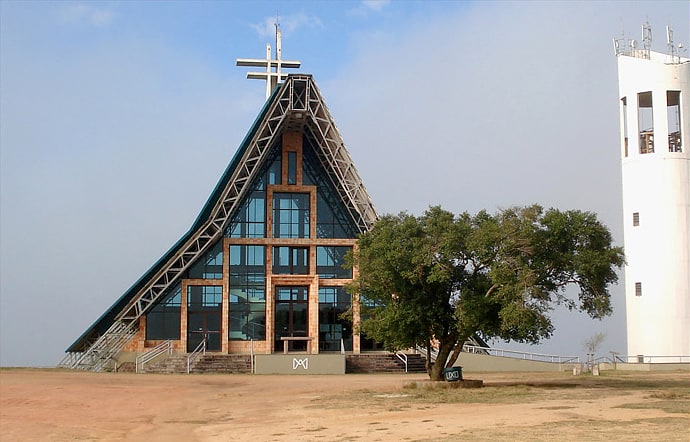
The Archdiocesan Sanctuary Nossa Senhora Madre de Deus is a Catholic church located at the top of the Pedra Redonda hill, Santuário Street, near Alpes Road, in Porto Alegre. The project for the building dates back to 1987, but its construction was delayed due to environmental concerns, and its cornerstone could only be laid on August 16, 1992, being consecrated by the Archbishop of Cologne, Cardinal Joachim Meisner. It was completed in June 2000 as part of the Third Millennium celebrations.
It has 700 m² of built area, divided into two floors. It is a steel, brick, and glass structure with bold lines, defined mainly by the large gable roof that organizes the whole structure and extends to ground level. It has a series of stained glass windows illustrating the Old Testament and the Sacraments, and a large statue of the Patroness, from Italy, sculpted in linden wood. It is a very sought after Sanctuary also for its ecological beauty and the spectacular 360 degree view of Porto Alegre and adjacent cities including the Guaíba estuary and the entrance to Lagoa dos Patos (Itapuã lighthouse). For this reason the city's tourist bus passes by the site several times a day.
The Shrine complex includes an independent bell tower and sanitary facilities for the large public that attends on festive occasions and pilgrimages. For these events an open-air altar was installed on the esplanade in front of the temple, from where one can also enjoy a magnificent view of the entire Porto Alegre region and the Guaíba estuary.
Since January 1, 2010 the Shrine has been administered by the Redemptorist Fathers. Currently the rector is Fr Claudio Mallmann, CSsR and the administrator is Fr Danilo Bulegon, CSsR.
When, in 1626, the Jesuit missionary saint Roque Gonzales, coming from Paraguay, crossed the Uruguay River penetrating the gaúcho soil, he baptized this region with the Guarani name Tupan-cy-retan = land of the Mother of God. In 1773, the then governor of Rio Grande do Sul, Colonel José Marcellino de Figueiredo, when transferring the capital from Viamão to Porto Alegre, with permission from the ecclesiastical authority, also changed the patron saint, which was S. Francisco das Chagas, to N. Sra. Madre (Mother) of God. From this date until our days and always, the Mother of God is the patroness of the Capital and of the Archdiocese of Porto Alegre. And, for this reason, the Cathedral is dedicated to the Mother of God.
Address: Rua Santuario 400, 91712-701 Porto Alegre (Glória)
Our Lady of Sorrows Church
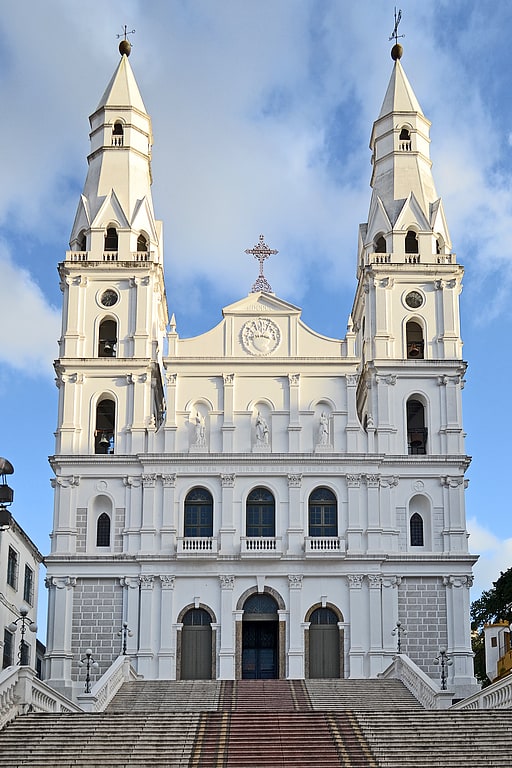
Nossa Senhora das Dores Church is a Catholic church located in the city of Porto Alegre, at Rua dos Andradas,587. It is the oldest church in the city still standing. Its construction took a long time and the plan of the facade was modified when it was still under construction, showing today an eclectic style, but the interior is richly decorated with gilded woodcarving in a late Baroque style with neoclassical elements, besides having an important group of Baroque statues of Christ in natural size representing the Passion cycle. Headquarters of ancient religious traditions and a building of great historical and artistic significance, it was nationally protected by IPHAN.
UFCSPA
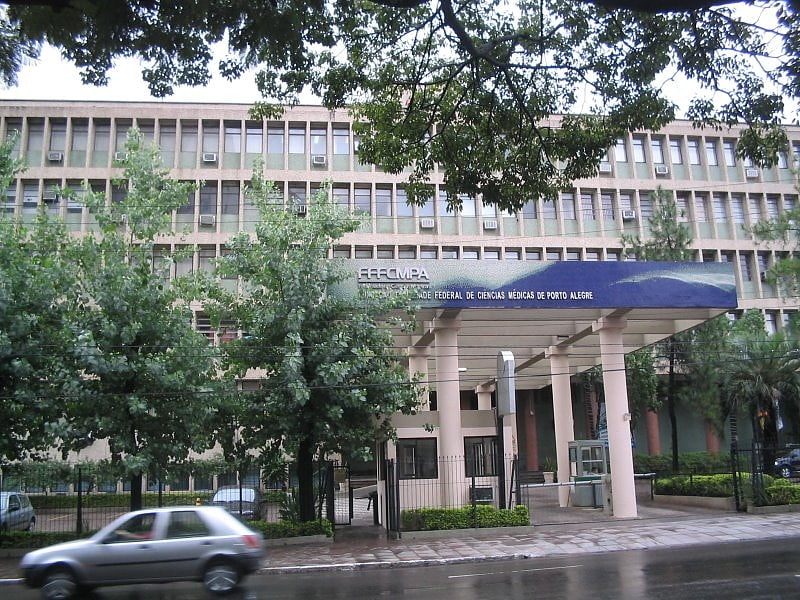
Higher educational institution in Porto Alegre, Brazil. The Federal University of Health Sciences of Porto Alegre is a federal institution of higher education and research on health sciences located in Porto Alegre, Brazil.
Founded in 1961, UFCSPA has today 15 degrees: Biomedicine, Medicine, Nursing, Nutrition, Physiotherapy, Psychology, Pharmacy, Toxicology, Gastronomy, Medical Physics, Health Management, Medical Chemistry, Biomedical Informatics, Food Technology and Speech therapy.
UFCSPA is linked to Santa Casa de Misericordia Hospital, a major hospital in Latin America.[17]
Address: 245 Rua Sarmento Leite, Porto Alegre (Centro)
Praia de Ipanema
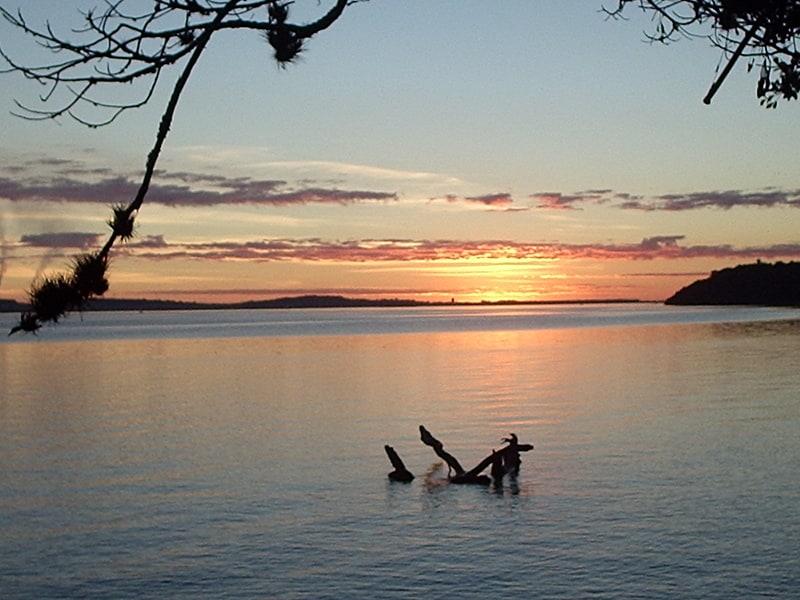
Also known as: Ipanema
Neighbourhood in Porto Alegre, Brazil. Ipanema is a neighbourhood in the city of Porto Alegre, the state capital of Rio Grande do Sul, in Brazil. It was created by Law 2022 from December 7, 1959.
Located on the bank of Guaíba Lake, Ipanema is considered part of the South Zone (Zona Sul) in the city.[18]
Address: Av. Guaíba, 91770-110 Porto Alegre
Cais Mauá
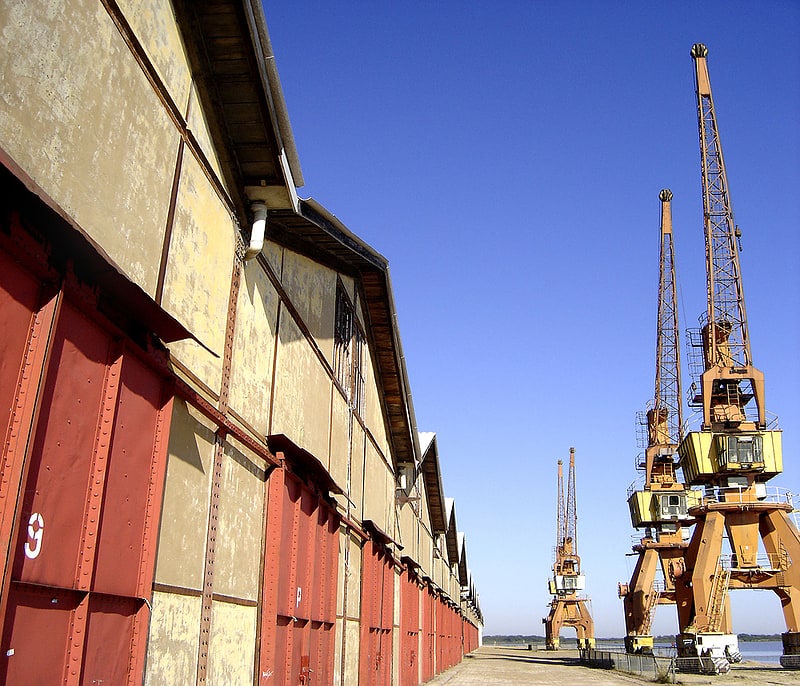
Cais Mauá is a section of the river port of Porto Alegre, Rio Grande do Sul, whose special characteristics made it protected by the National and Municipal Historic Heritage Sites. This wharf is part of the Port of Porto Alegre.
Officially, Pier Mauá is located on the Canal dos Navegantes, part of the Jacuí Delta, and upstream of the Guaíba Lake.
Address: Av. Mauá, 1050, 90010-110 Porto Alegre (Centro)
Santander Cultural
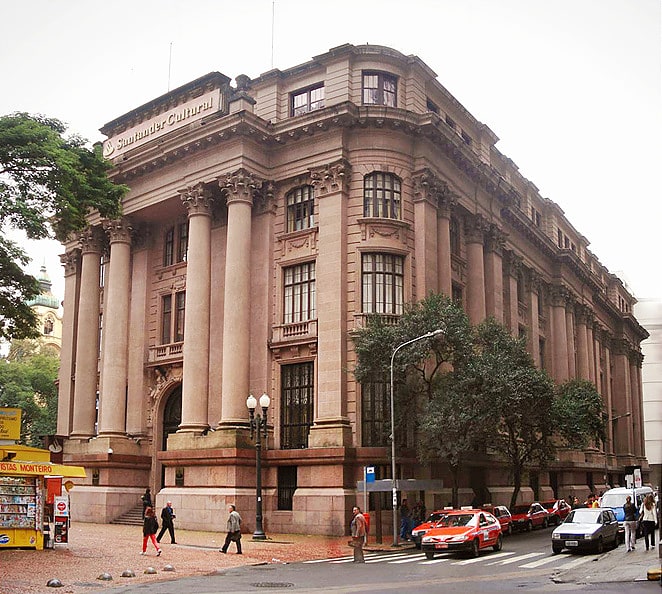
Farol Santander Porto Alegre, formerly called Santander Cultural, is a Brazilian cultural center maintained by Banco Santander in a historic building in Porto Alegre, Rio Grande do Sul. It is located in Praça da Alfândega and its building was listed by IPHAE.
Address: Rua Sete de Setembro 1028, 90010-191 Porto Alegre (Centro)
Casa da Cultura Mario Quintana

The Casa de Cultura Mario Quintana, originally the Hotel Majestic, is a Brazilian historic building and cultural center of the city of Porto Alegre, one of the largest and best equipped in Brazil.
The Majestic Hotel had its heyday in the 1930s, 1940s, and 1950s. During this period it had as guests big names in politics, such as ex-presidents Getúlio Vargas and Jango Goulart, and in the artistic world, such as Vicente Celestino, Virginia Lane, and Francisco Alves. The House was named after one of Brazil's greatest poets, Mário Quintana, who was born in the Alegrete city in Rio Grande do Sul but adopted Porto Alegre as his hometown. The writer lived in the hotel from 1968 to 1980, in apartment 217.
Museu Joaquim José Felizardo
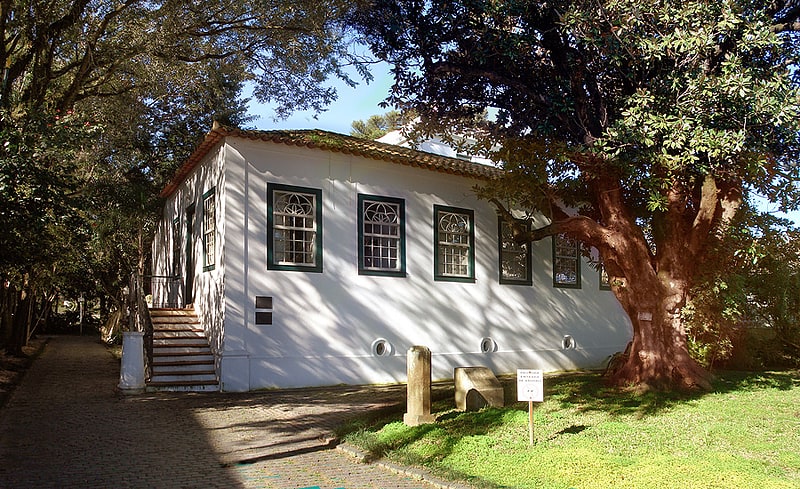
The Museum of Porto Alegre Joaquim Felizardo is a historical museum of the city of Porto Alegre, capital of the Brazilian state of Rio Grande do Sul. It is housed in the Solar Lopo Gonçalves, located at 582 João Alfredo Street. It opens to the public on Mondays from 1:30pm to 5:30pm, and Tuesdays through Fridays from 9am to noon and 1:30pm to 5:30pm.
Address: Rua Joao Alfredo 582, 90050-230 Porto Alegre (Centro)
Port of Porto Alegre
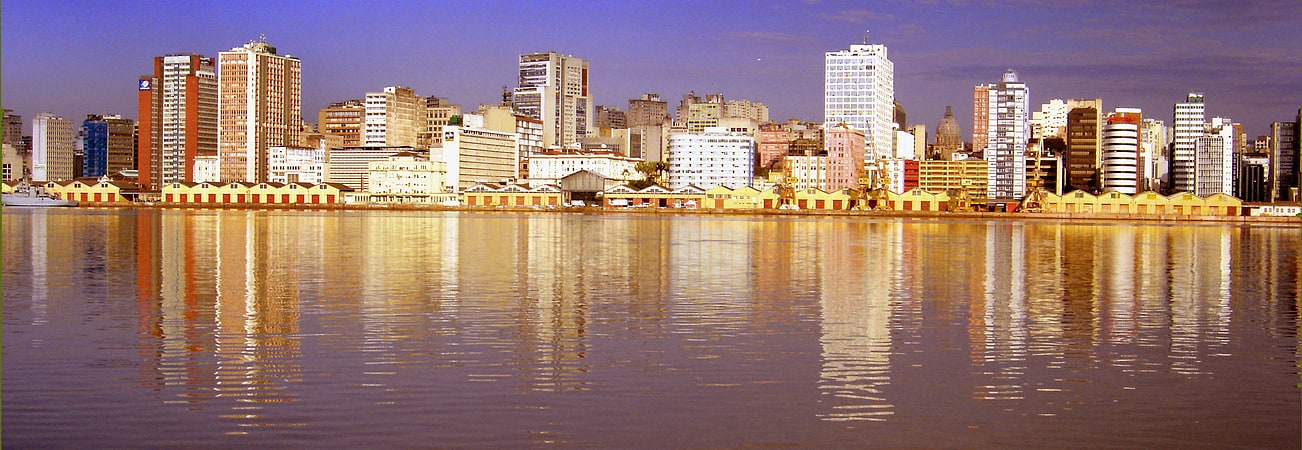
Also known as: Porto de Porto Alegre
Glass & mirror shop in Porto Alegre, Brazil. The Port of Porto Alegre is an inland port located in Guaíba Lake in Porto Alegre, Rio Grande do Sul, Brazil. It is connected to Downtown Porto Alegre. Superintendência de Portos e Hidrovias was established to manage and distribute cargoes throughout the State of Rio Grande do Sul. To assure effective operations, SPH seeks to provide modern infrastructure and technological support to the Port of Porto Alegre.[19]
Guaíba
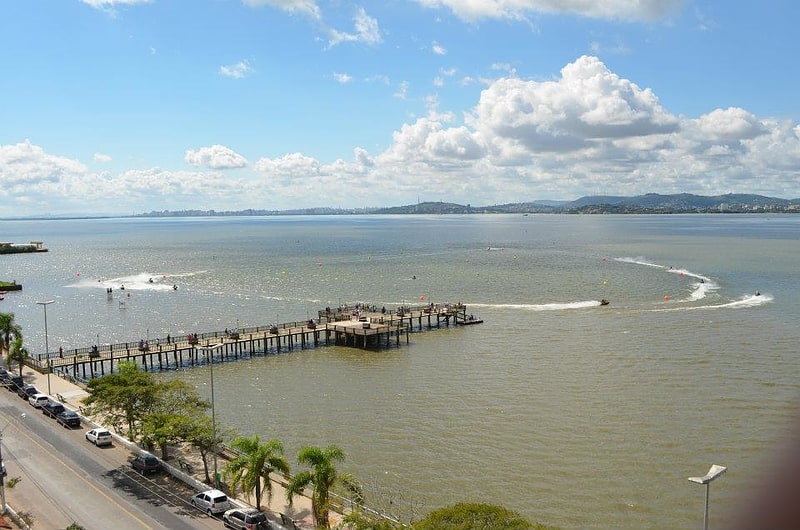
City in Brazil. Guaíba is a city located in the Metropolitan Porto Alegre of Porto Alegre, in the Brazilian state of Rio Grande do Sul. The city is on the shores of the Guaíba Lake.[20]
Bike PoA UFRGS
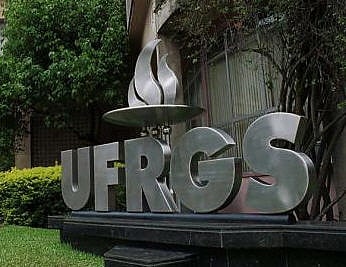
Also known as: Universidade Federal do Rio Grande do Sul
Research institution in Porto Alegre, Brazil. The Federal University of Rio Grande do Sul is a Brazilian public federal research university based in Porto Alegre, Rio Grande do Sul. UFRGS is among the largest and highest-rated universities in Brazil, having one of the largest number of scientific publications. From 2012 to 2019, the university was elected as the best federal university of Brazil. UFRGS has over 31,000 undergraduate students, over 12,000 graduate students, and more than 2,600 faculty members. As a Brazilian public federal institution, students do not pay tuition fees to enroll in courses offered by the university.
Among the main alumni affiliated with UFRGS, there are three former presidents of Brazil, former state governors, former members of the Supreme Federal Court, members of the Brazilian Academy of Letters and important Brazilian actors, musicians and journalists.[21]
Address: Avenida Osvaldo Aranha, s/n, Porto Alegre (Centro)
Porto Alegre Brazil Temple
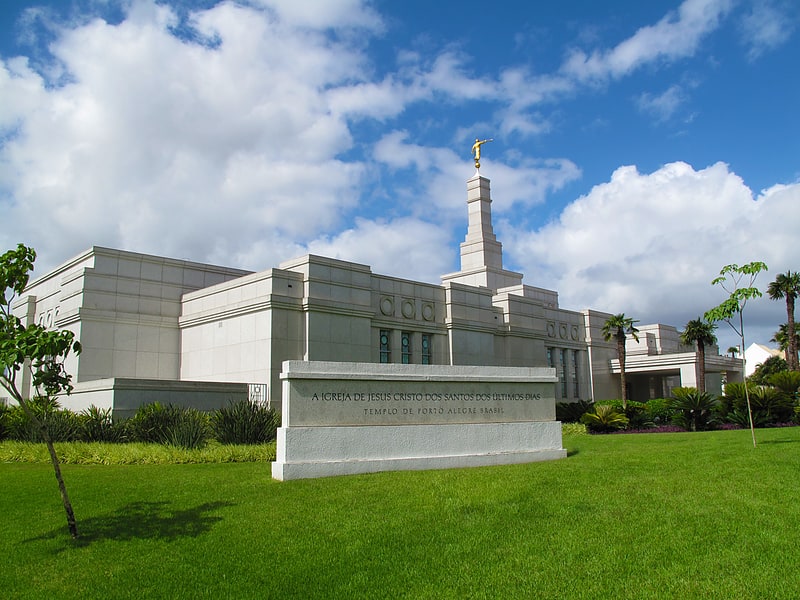
Also known as: Templo de Porto Alegre
Temple. The Porto Alegre Brazil Temple is the 102nd operating temple of The Church of Jesus Christ of Latter-day Saints.
The Porto Alegre Temple overlooks the city from the east toward a large river and port for which the city is named. It has an exterior of white granite and a single spire topped with a statue of the angel Moroni. The temple has a total of 10,700 square feet, two ordinance rooms, and two sealing rooms.[22]
Palácio Piratini
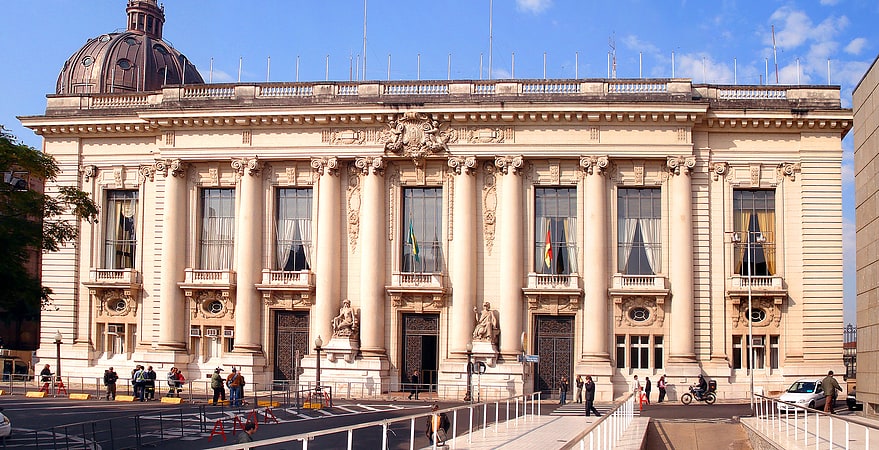
Architecture
Address: Praca Mal. Deodoro, s/n, Porto Alegre (Centro)
Godoy House

Also known as: Casa Godoy
Building in Porto Alegre, Brazil. The Godoy House is a historic building on Independência Avenue in the city of Porto Alegre, Rio Grande do Sul, Brazil.
The house is one of the rare remaining buildings in the Art Nouveau style in Porto Alegre, dating from 1907.
Aside from its architectural importance, the house saw intense social activity throughout its history. It was originally built for Arno Bastian Meyer and his family between 1904 and 1907. Later, with the separation of the Meyers, the house was rented to the Greco family. In 1926 businessman Francisco Tschiedel purchased the house, and in 1939 it was acquired by the psychiatrist doctor Jacintho Godoy, an illustrious social figure of the time, and the house became the meeting point for notables of Porto Alegre's society between the years of 1939 and 1959.
The house was built utilizing imported technology at the time, with masonry and iron works in harmony with its style. Much care was taken with every detail of the house, from the choice of materials used, to the embellishments and ceilings and walls, and furniture, forming a notable coherent style throughout.
The architect, Hermann Menschen, was a German immigrant who worked for Rudolph Ahrons' renowned engineering company, and was responsible for its projects department until 1907.
The house's three stories, totaling 719.39 m2 (7,743.4 sq ft), are divided as ground floor, second floor, and loft. The facade is embellished with floral and whiplash motifs characteristic of the style, and elaborated wrought iron bars adorn the windows on the ground floor. The only opening to the loft is framed in an impressive gable that dominates the facade. Above the front door there is a relatively small stained glass window.
The interior, Dr. Godoy installed his home office on the ground floor where the above-ground cellar used to be, connected to the rear of the house where the kitchen, annex, and backyard are located. On the second floor, a hallway interconnects the four bedrooms and the bathroom. On the front part of the house on the second floor was located the drawing room, and to the rear the dining room, smoking room, and music room, all connected to a veranda with ornate iron balustrade. Many notable frescoes, stained glass, and decor remain, reminiscent from the original construction.
The Godoy House was listed for preservation on November 26, 1996, and acquired by the City Hall. Since 1998, the Coordenação da Memória Cultural da Secretaria Municipal de Cultura e a Equipe do Patrimônio Histórico e Cultural operates at the house.[23]
Address: Avenida Independencia 456, 90035-071 Porto Alegre (Centro)
Parque Germânia
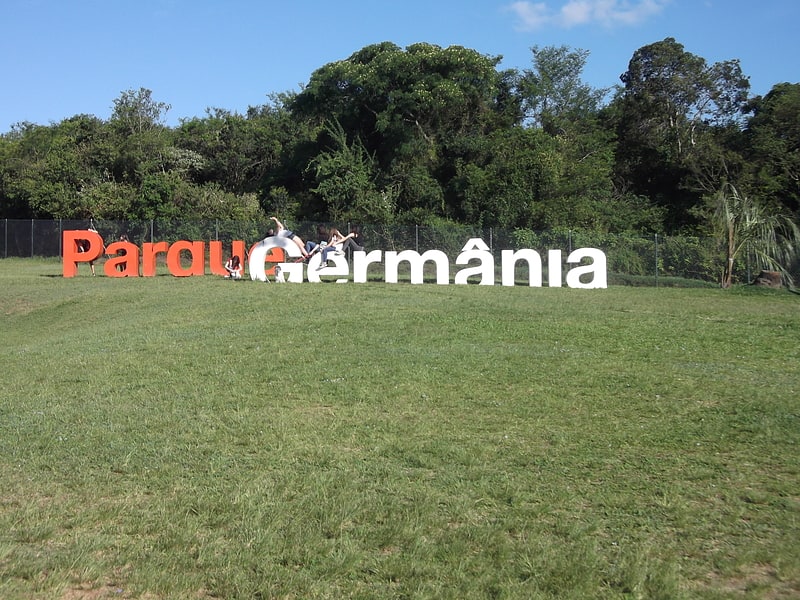
Parque Germânia, also called by its former name, Parque Alemanha, is a park located in the Brazilian city of Porto Alegre, situated in the Jardim Europa neighborhood.
Igreja Nossa Senhora Das Dores
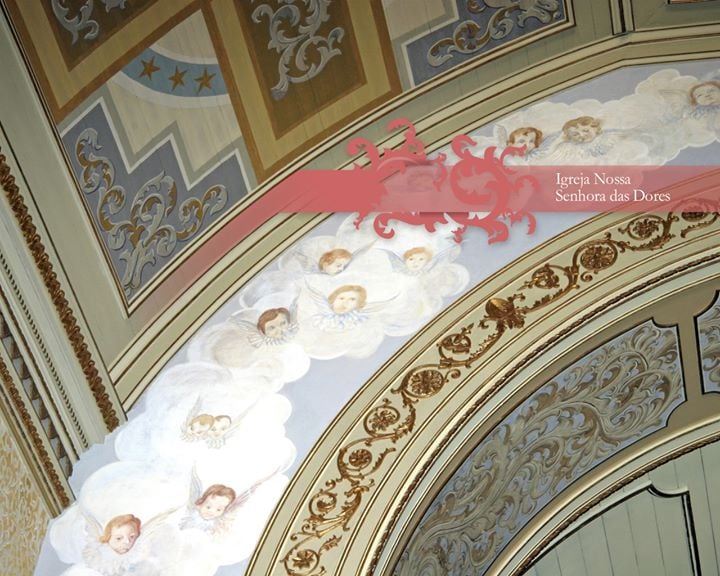
Church, Architecture
Address: Rua dos Andradas 630, 90020-002 Porto Alegre (Centro)
Gomes Jardim House
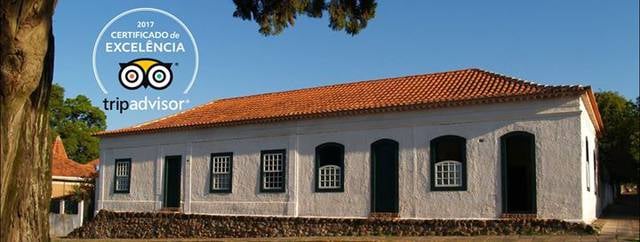
Museum, Historical place, Specialty museum
Address: Rua 14 de Outubro 384, 92500-000 Guaiba
Praça do Japão

Praça do Japão, sometimes called just "Praça Japão", is located in the Boa Vista neighborhood of the Brazilian city of Porto Alegre, capital of the state of Rio Grande do Sul.